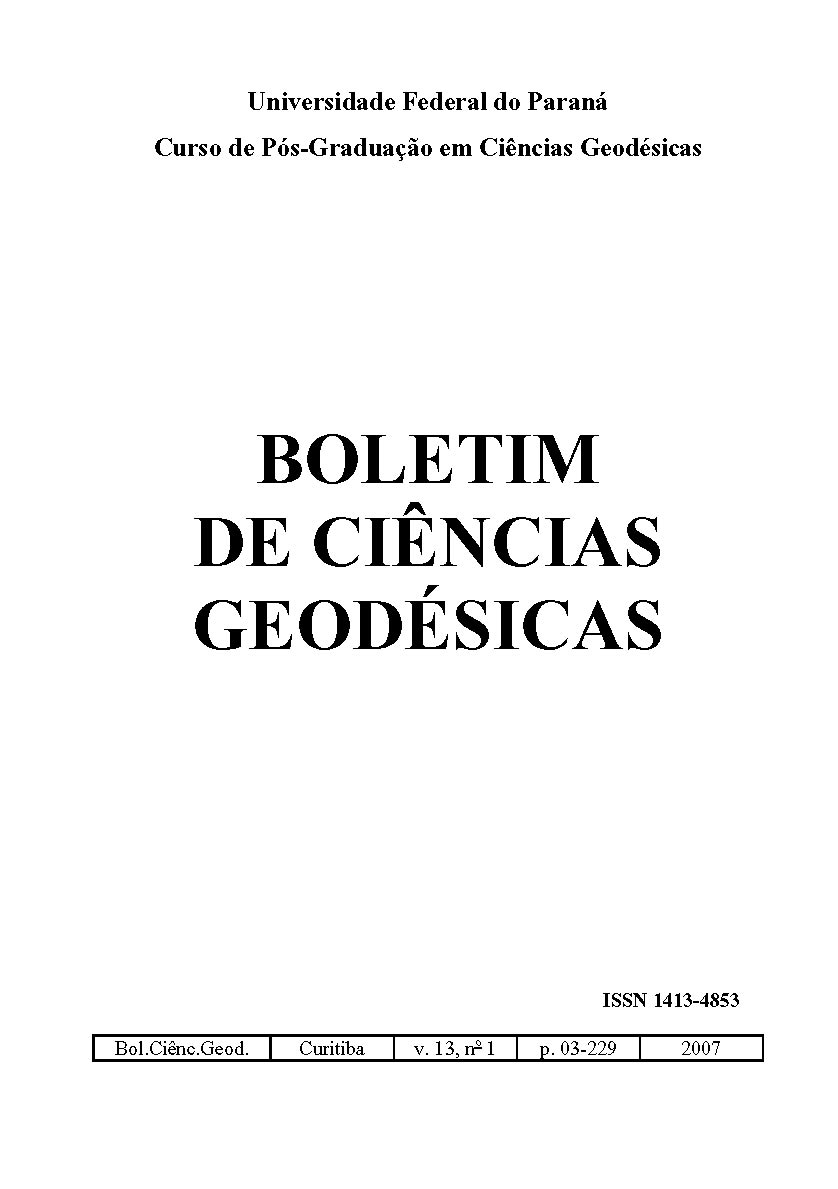SEGMENTAÇÃO DE DADOS DE PERFILAMENTO A LASER EM ÁREAS URBANAS UTILIZANDO UMA ABORDAGEM BAYESIANA
DOI:
https://doi.org/10.5380/bcg.v13i1.8246Palavras-chave:
Markov Random Field, Modelo Digital de Elevação, Segmentação por região, QuadTree, Digital Elevation Model, Region SegmentationResumo
Neste artigo é apresentada uma metodologia para a segmentação de um Modelo
Digital de Elevação obtido a partir de um sistema de varredura a laser. A
metodologia de segmentação baseia-se na utilização das técnicas de divisão
recursiva usando a estrutura quadtree e de fusão de regiões usando o modelo
Markov Random Field. Inicialmente a técnica de divisão recursiva é usada para
particionar o Modelo Digital de Elevação em regiões homogêneas. No entanto,
devido a ligeiras diferenças de altura no Modelo Digital de Elevação, nesta etapa a
fragmentação das regiões pode ser relativamente alta. Para minimizar essa
fragmentação, uma técnica de fusão de regiões baseada no modelo Markov Random
Field é aplicada nos dados segmentados. As regiões resultantes são estruturadas
usando um grafo de regiões adjacentes (Region Adjacency Graph). Cada nó do
Region Adjacency Graph corresponde a uma região do Modelo Digital de Elevação
segmentado e dois nós tem conectividade entre eles se as duas regiões
correspondentes compartilham de uma mesma fronteira. Em seguida, assume-se que
o comportamento da variável aleatória em relação a cada nó dá se de acordo com
um Markov Random Field. Esta hipótese permite a obtenção da chamada
distribuição de probabilidade a posteriori, cuja solução é obtida via estimativa Maximum a Posteriori. Regiões que apresentam alta probabilidade de fusão são
fundidas. Os experimentos realizados com os dados de perfilamento a laser
mostraram que a metodologia proposta permitiu separar os objetos no Modelo
Digital de Elevação com um baixo nível de fragmentação.



